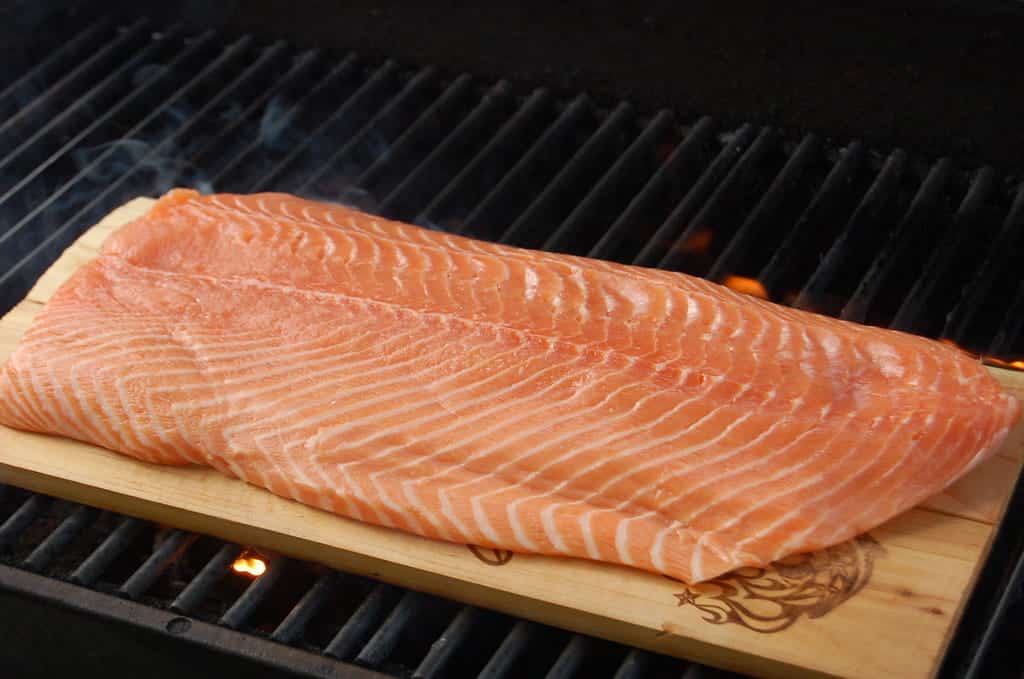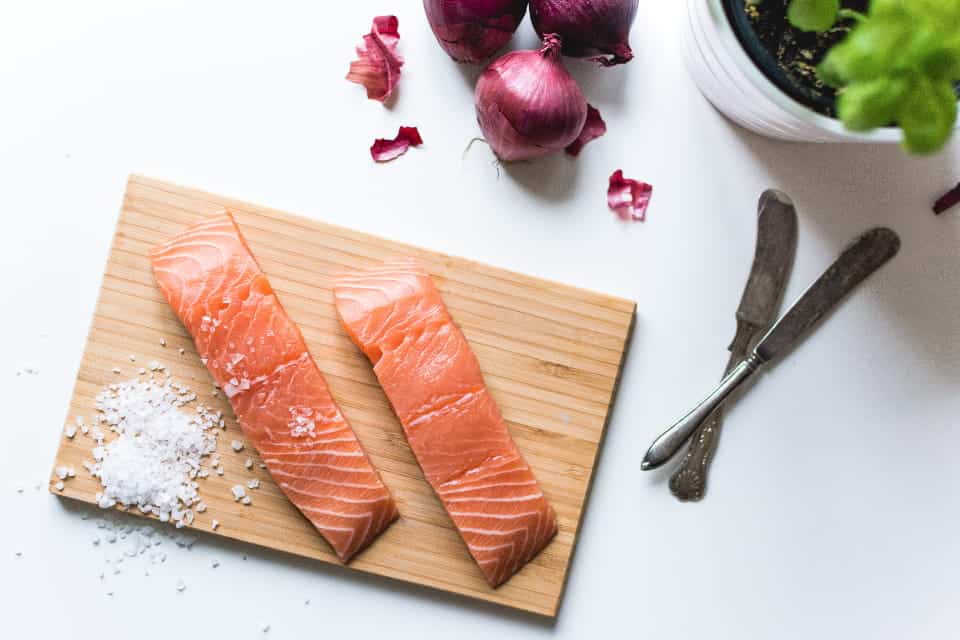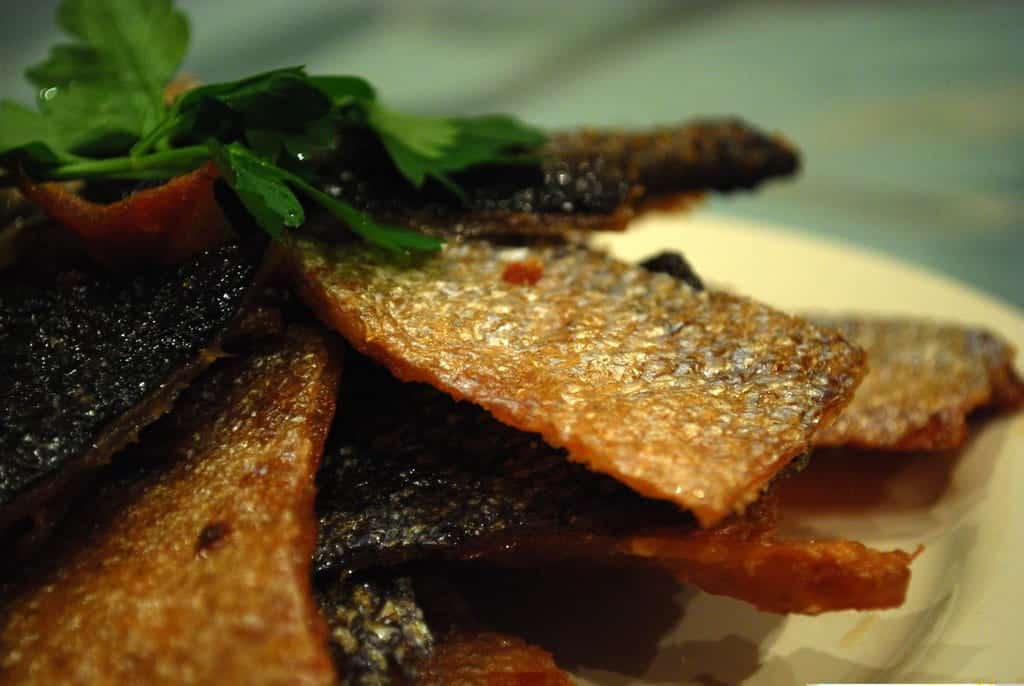Pink salmon is a fantastic present from the water. The wonderful taste will linger in your mouth even after finishing your dish. But is pink salmon good to eat?
In general, you have the best of both worlds when serving yourself a filet of pink salmon. This fish is not only delicious but also beneficial for your health.
In this post, we will explain all the benefits offered by the food. It will be an excellent motivation for your next fishing trip.

What Is Pink Salmon?
Pink salmon, also known as humpback salmon, is an anadromous fish in the big salmon family. It appears to be the Pacific’s smallest and most common type of salmon.
Origin
North America and Asia’s Pacific rim are home to pink salmon. People find them in huge groups in the Arctic Ocean, North Pacific Ocean, and adjacent waters.
Appearance
Pink salmon have a steel blue to blue-green back, white on the stomach, and silvers on the sides.
Males that are ready to breed have dark backs and red sides with brownish-green spots. They grow a hump on their back as well, giving them the moniker “humpback” salmon.
Flavor
Pink salmon has the palest pink flesh of any coastal Pacific salmon. It has a mild flavor, soft flesh, small flakes, and low oil content.
Is Pink Salmon Good To Eat?
Yes. The mild taste will make you addicted to it no matter how much you eat. The numerous nutrients included in one serving add up to the benefits.
Protein
Protein makes up 64% of the calories in pink salmon. Metabolism will break protein down into amino acids.
These amino acids are essential for fetal and childhood development and help in cell production, healing, and preservation.
Amino acids come in three different forms:
- Nonessential amino acids: Our body doesn’t need them, giving them the name.
- Conditional amino acids: Our body can produce them, but it’s necessary to supplement your diet with them when you don’t feel well or are under stress. Salmon is a good choice in this case.
- Essential amino acids: We can’t produce these acids in our bodies. Hence, you have to choose food that is rich in them. And salmon is abundant in essential amino acids.
Fats
Pink salmon contains 6.6g of fat per 124-gram serving, but 49% of the fat comes with polyunsaturated and heart-healthy mono fats.
These fats decrease cholesterol levels and minimize the chances of Type 2 diabetes and coronary heart disease.
Omega-3 fatty acids are a significant type of polyunsaturated lipids abundant in pink salmon. The fats can also help lower blood pressure and control irregular heartbeat.
Selenium
A 124-gram filet of pink salmon has 85% of the recommended daily amount of selenium. This nutrient is crucial, although our body only needs a little of it.
Selenium will work with protein and create selenoproteins, antioxidant enzymes that aid in limiting cellular damage caused by free radicals.
Besides, selenoproteins control thyroid function, strengthen the immune system, and decrease the risk of cancer and heart diseases. They might also improve arthritis pain.
Vitamin B12
The same size of pink salmon also comes with 245% of RDA (Recommended Dietary Allowance) for vitamin B12.
This vitamin supports DNA synthesis, cognitive performance, and red blood cell production.
Researchers are looking at whether it also minimizes the chances of dementia caused by aging and coronary artery illnesses.
Vitamin D
107% of RDA for vitamin D is present in one standard serving of pink salmon. Not many foods have vitamin D, although our body may generate it when exposed to UV light.
Vitamin D plays a vital role in absorbing calcium and balancing the content of phosphorus and calcium in our bodies. As a result, it’s a big help for bone health.
The vitamin also affects the immune system, neurological, and cell development processes.
Moreover, if you have a proper vitamin D intake, you can lower your chances of some types of cancer, diabetes, osteoporosis, and other diseases.

Niacin
A standard serving of pink salmon provides eaters with 74% of RPDA for niacin, a water-soluble vitamin that aids in the body’s breakdown of food to energy.
Niacin also benefits the health of the skin, eyes, hair, liver, and nervous system.
It may lessen the risk of heart attack, Alzheimer’s disease, and cataracts while lowering cholesterol levels.
Read more: How Long Does Pickled Fish Last?
How To Cook Pink Salmon?
There are three common ways to prepare pink salmon. Each offers a different outcome and requires specific requirements for the cooking process.
Bake
Baking is a straightforward method. Follow these steps, and you will have an excellent dish:
- Preheat your oven to 350.
- Lay aluminum foil on the baking sheet and line your salmon on the top.
- Season your fish with olive oil, pepper, and salt.
- Put the sheet in the oven and cook for 15 to 20 minutes.
- Serve the fish right after removing it from the oven.

Grill
If you want to grill the salmon, leave the skin on. It will turn crunchy and bring the flavor of your food to the next level.
The instructions for grilling pink salmon are as follows:
- Brush your fish with olive oil.
- Season the fish with pepper and salt.
- Put the filet on a hot grill and cook it with the skin-side facing down.
- Flip the filet if you see white lines forming on the fish. This side has received enough heat, and it’s time to move to the other side.
- Cook for five to six minutes, or until the fish can easily lose off the grill.
Pan-fry
If you don’t have an oven or grill, go for this traditional method. Your food can still taste good.
So how to pan-fry pink salmon?
- Season your fish with salt and pepper.
- Heat up olive oil or coconut oil in your skillet. Remember to set medium heat.
- Place the filet in the skillet and cook for four minutes on each side.
- Add garlic, fresh dill, and lemon juice to enhance the flavor.
Do Different Types Of Salmon Differ In Health Benefits?
All of the choices are undoubtedly delicious. Yet, if you want to know which salmon is the healthiest, let’s explore how each differs in nutrition.
Smoked salmon
Smoked salmon with some cream cheese will win every heart of food lovers.
It has the same nutrient profile as fresh salmon, but the higher sodium content in your smoked food is the only difference.
Canned salmon
Salmon in cans may be a more convenient and cheaper choice. However, you might want to pay attention to how much sodium you will consume.
Raw salmon
Even if you might sometimes enjoy some raw salmon, make sure to only eat it at restaurants that follow the strictest standards for food safety.
Salmon cooked, or raw has a similar nutrient profile. But eating uncooked or undercooked seafood raises your chance of developing a foodborne illness.
Salmon skin
Even though some people don’t feel like eating the silvery skin of this fish, it is worth trying if you want to boost your nutrient intake.

Can You Eat Salmon Every Day?
In general, consuming salmon every day is not advisable unless you do it in moderation.
According to the Dietary Guidelines for Americans, people should eat eight to ten ounces of seafood each week, ideally mercury-free fish like salmon.
A pack of smoked salmon generally contains roughly four ounces of salmon to indicate volume.
If you are nursing or expecting, take extra caution. To determine your specific seafood limits and ensure you are within a safe range, speak with your healthcare physician.
Read more: Are Arctic Grayling Fishes Good to Eat? (Explained)
The Bottom Line
Pink salmon can make tasty and healthy food. The nutritional content included per serving helps your body’s functions and prevent many diseases.
However, eating salmon every day is not a good idea, especially the raw one. If you are pregnant or nursing, ask your doctor before eating the food.
Pink salmon tastes good with almost any cooking process. So, feel free to make your own and enjoy the gift of nature. Thank you for reading!